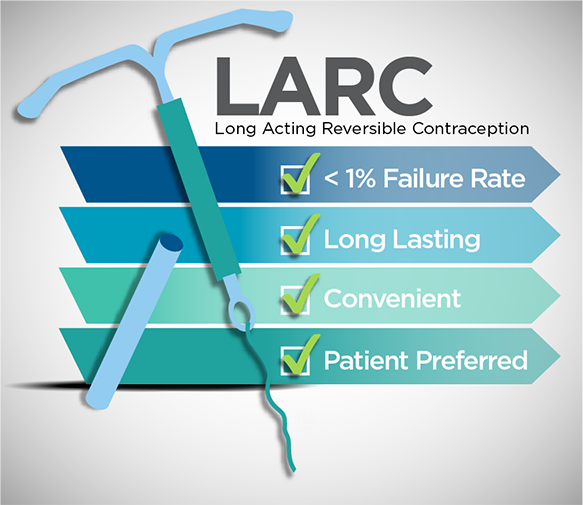New AI-powered patient portal boosts patient access, safety, and satisfaction.

Patient-Centered Family Planning Care
Reliable, Compassionate Access to Family Planning Services Puts Patient First
By Carly Marker
The Permanente Federation
The Centers for Disease Control and Prevention (CDC) hail family planning as one of the 10 great public health achievements of the 20th century, alongside other accomplishments such as vaccinations and recognition of tobacco as a health hazard. The ability for women and their partners to have control over their family size and timing of children has had tangible effects on the public health of communities.
For example, family planning helps to reduce the spread of sexually transmitted diseases (STDs), reduce related infertility resulting as a complication of STDs, and can lead to decreased rates of child and infant mortality. Given that nearly half of all pregnancies in the United States are reported as unplanned, Kaiser Permanente recognizes the strong link between access to contraceptive care and reproductive health.
 The organization believes that family planning is a critical component of a patient’s preventive health care and should be available to all patients in the form of comprehensive, compassionate, well-informed contraceptive care. A key focus area is increased access to long-acting reversible contraception (LARC) for adolescent females. Examples of LARC include copper and hormonal intrauterine devices (IUD) and subdermal implants.
The organization believes that family planning is a critical component of a patient’s preventive health care and should be available to all patients in the form of comprehensive, compassionate, well-informed contraceptive care. A key focus area is increased access to long-acting reversible contraception (LARC) for adolescent females. Examples of LARC include copper and hormonal intrauterine devices (IUD) and subdermal implants.
“Across all our regions, many women, especially teens, are unaware that they have options beyond the pill,” says Kari L. Carlson, MD, FACOG, clinical lead for Women’s Health, The Permanente Federation; and chair of the Ob/Gyn Chiefs Group, The Permanente Medical Group (TPMG) in Northern California. “In addition to training our primary care and pediatric physicians on how to place LARC, we are also encouraging them to engage in discussions on the pros and cons of all contraception types. This should ultimately help our patients make more well-informed choices on what best meets their needs.”
Kaiser Permanente is advocating for LARC use as the first-line contraception for most adolescent and adult women due to their less than 1 percent failure rate, long-lasting efficacy, convenience, and general user satisfaction. While each Kaiser Permanente region has developed its own strategies for family planning, a national working group was established in 2014 to promote regional practices that have been identified for scaling and implementing across the organization.
Fertility, Family and Future
“Our goal is to make LARC the first-line recommendation in contraceptive counseling by educating providers, reducing barriers to access for patients, and improving patient education,” explains Sharisse Arnold Rehring, MD, director of Medical Education and Pediatric Education, Colorado Permanente Medical Group (CPMG). To spread these practices across Kaiser Permanente Colorado (KPCO), Dr. Arnold Rehring participated in a task force convened by a quality committee led by her colleague Jen Seidel, MD. The task force was dedicated to increasing access to LARC in the primary care setting. A subcommittee of the Department of Education partnered with John Steiner, MD and his research colleagues from the Kaiser Permanente Institute of Health Research to measure subsequent outcomes.
Across all our regions, many women, especially teens, are unaware that they have options beyond the pill.
– Kari L. Carlson, MD, FACOG, clinical lead for Women’s Health, The Permanente Federation
The task force, in partnership with the Department of Education, developed a multi-component intervention that provided educational training to primary care and pediatric physicians, facilitated care coordination, and promoted LARC placement during the same visit that the patient initially sought contraceptive care. Following the initiative, KPCO found that by training more providers or clinicians in LARC care, the rate of LARC placement increased in primary care and remained constant in Ob/Gyn. Total LARC placements increased across the region. These efforts were sustainable over time and did not need any booster interventions.
Due to the success from the KPCO initiative, the Kaiser Permanente’s national task force on family planning plans to spread the curriculum and training model for pediatricians and primary care to other regions. Because of Kaiser Permanente’s geographic spread and diverse membership, Dr. Carlson also acknowledges that one region’s implementation may not look the same as another. “Interregionally, we try to consider the differences in both patient and clinician populations in order to design and implement contraceptive programs and resources that are culturally competent and appropriate,” she says.
Focusing on Metrics that Matter
In addition to the adolescent LARC initiative, KPCO and Kaiser Permanente Northern California are partnering with University of California, San Francisco to pilot the Patient-Reported Outcome Performance Measure (PRO-PM) project. The goal of this project is to make better use of patient feedback so organizations can improve the way providers or clinicians discuss contraceptive care with their patients.
Following an office visit, patients are asked to answer questions about interpersonal dynamics, information-sharing, and decision support. This project aims to address the patient’s experience as opposed to more traditional outcomes measures. If deemed effective, this work may be implemented across the organization to measure both the quality of patient experience and contraception access.
The electronic medical record (EMR) is also an important tool to transform the ways in which Kaiser Permanente delivers contraceptive care. For example, clinicians in Northern California are prompted to track contraception care in the patient’s medical record, encouraging them to have family planning conversations during routine care visits. Specifically, TPMG in Northern California is implementing automatic alerts and surveillance in the EMR to increase adoption of these practices.
“By supporting and enabling all members to act on fully informed decisions about their fertility, family, and future, we are seeing success in meeting our goal of increasing rates of the most effective contraception to our vulnerable adolescent population,” says Dr. Arnold Rehring. “This will hopefully reduce the number of unintended pregnancies, and thereby increase healthy birth outcomes. That is something to celebrate.”


